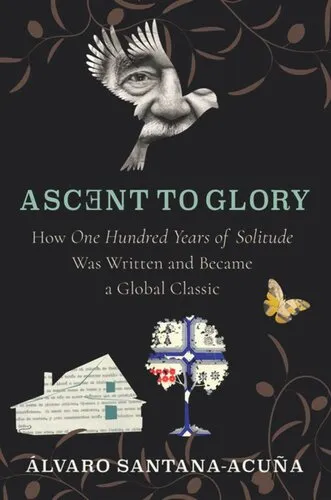One Hundred Years of Solitude Cliffs Notes Study (Notes)
2.0
Reviews from our users

You Can Ask your questions from this book's AI after Login
Each download or ask from book AI costs 2 points. To earn more free points, please visit the Points Guide Page and complete some valuable actions.Related Refrences:
Introduction to 'One Hundred Years of Solitude Cliffs Notes Study (Notes)'
Welcome to the comprehensive guide on Gabriel García Márquez's masterpiece, One Hundred Years of Solitude. This study guide serves as a resource for students, educators, and readers who wish to explore the rich tapestry of characters, themes, and symbols woven by García Márquez. Known for its intricate storytelling and magical realism, the novel is celebrated as a monumental piece of Latin American literature. Through this detailed guide, we delve into the narrative intricacies and historical contexts that have garnered the novel worldwide acclaim.
Detailed Summary of the Book
One Hundred Years of Solitude chronicles the multigenerational story of the Buendía family in the fictional town of Macondo. Orchestrated by the visionary imagination of Gabriel García Márquez, the story unfolds over seven generations, encapsulating themes of love, power, and destiny.
The novel begins with José Arcadio Buendía and his wife Úrsula Iguarán, the founding patriarchs of Macondo. Their endeavor to create a utopian society gives rise to a lineage marked by passion and tragedy. Throughout its narrative, the supernatural seamlessly coalesces with the mundane, rendering Macondo a surreal yet authentic realm. The cyclical nature of the family’s fortunes echoes broader themes of solitude and human tenacity.
Political upheaval and social dynamics play a significant role in the lives of the Buendía descendants. As civil wars rage and technological advancements seep into Macondo, the town becomes a microcosm of Latin American history. In its essence, the novel is a poignant exploration of how personal and societal solitude can shape human experience, concluding with a prophetic revelation that encapsulates the inevitable dissolution of the Buendía family.
Key Takeaways
- The concept of time is fluid and cyclical, reflecting a philosophy that echoes throughout Latin American history and culture.
- Solitude manifests both as a curse and a form of enlightenment, shaping the destinies of the Buendía family.
- Magical realism serves as a vehicle to portray the incredulous and extraordinary facets of everyday life.
- Themes such as love, memory, and fate are intricately interwoven to depict the complexities of human existence.
Famous Quotes from the Book
Gabriel García Márquez’s lyrical prose offers profound insights into human nature and experience. The following quotes encapsulate the novel’s thematic depth and literary artistry:
"It was inevitable: the scent of bitter almonds always reminded him of the fate of unrequited love."
"There is always something left to love."
"The world was so recent that many things lacked names, and in order to indicate them it was necessary to point."
Why This Book Matters
One Hundred Years of Solitude is more than just a novel; it is a cultural artifact that immortalizes the essence of Latin America. García Márquez’s pioneering use of magical realism redefined narrative techniques, influencing countless writers and expanding the boundaries of literary expression.
Moreover, the novel addresses universal themes of identity, solitude, and the inexorable passage of time. Its blending of history, folklore, and myth provides a rich tapestry that challenges readers to contemplate the vibrancy and complexity of human experience.
The enduring legacy of One Hundred Years of Solitude lies in its ability to resonate with readers across generations, transcending cultural and linguistic barriers. As a cornerstone of world literature, it invites readers to explore the interconnectedness of memory, reality, and imagination.
Free Direct Download
You Can Download this book after Login
Accessing books through legal platforms and public libraries not only supports the rights of authors and publishers but also contributes to the sustainability of reading culture. Before downloading, please take a moment to consider these options.
Find this book on other platforms:
WorldCat helps you find books in libraries worldwide.
See ratings, reviews, and discussions on Goodreads.
Find and buy rare or used books on AbeBooks.
1372
بازدید2.0
امتیاز50
نظر98%
رضایتReviews:
2.0
Based on 0 users review
"کیفیت چاپ عالی بود، خیلی راضیام"
Questions & Answers
Ask questions about this book or help others by answering
No questions yet. Be the first to ask!



